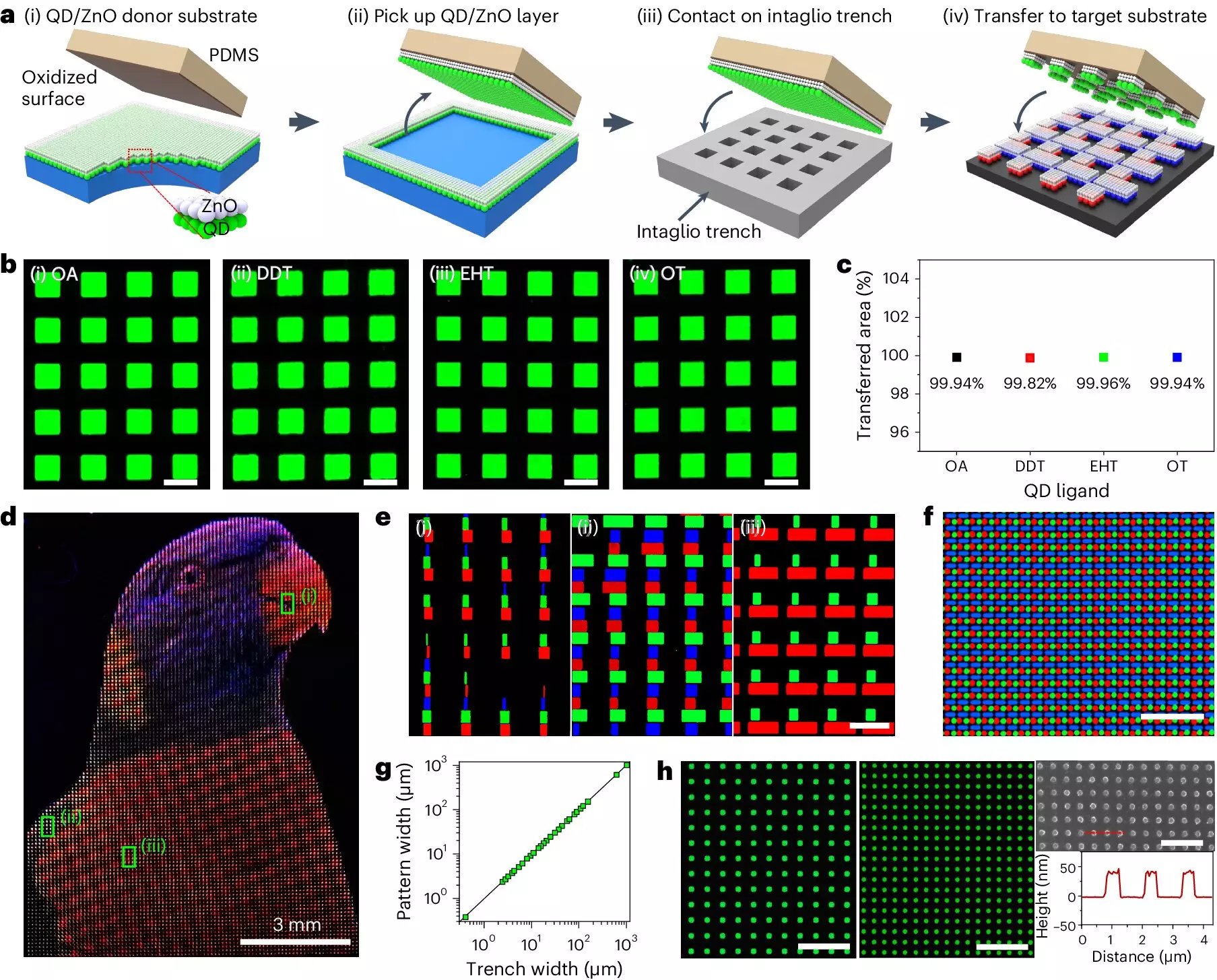Display technology is constantly evolving to meet the demands of the modern world, with a particular focus on augmented reality (AR) and virtual reality (VR) experiences. Recent advancements in wearable, mobile, and Internet of Things (IoT) technologies have fueled the need for enhanced display capabilities. In response to this demand, a research team has developed a groundbreaking double-layer dry transfer printing technology that has the potential to revolutionize the way we experience AR and VR.
The innovative double-layer dry transfer printing technology allows for the simultaneous transfer of light-emitting and electron-transferring layers onto a substrate. This breakthrough opens up new possibilities for creating more lifelike and immersive visuals in AR and VR applications. By utilizing quantum dot nanoparticles as the next generation of display light-emitting materials, this technology achieves high color purity and reproduction, providing users with a truly immersive experience.
Traditional dry transfer printing methods have been limited by their low luminescence efficiency, making them unsuitable for actual display production. However, the new double-layer technology, developed by a team of researchers led by DGIST Professor Ji-woong Yang, addresses these limitations by significantly improving both the brightness and efficiency of light-emitting devices. By reducing interfacial resistance and enhancing electron injection, the technology enables the production of high-resolution pixel patterning with ultra-high definition and efficiency.
One of the key advantages of the double-layer dry transfer printing technology is its potential for mass production. By achieving high external quantum efficiency (EQE) of up to 23.3%, the researchers have demonstrated the feasibility of commercializing products that feature ultrahigh-definition patterns of quantum dots. With the ability to create patterns of up to 25,526 pixels per inch (PPI) and cover an 8 cm x 8 cm area through repeated printing, this technology paves the way for higher resolution screens in VR and AR applications.
The development of double-layer dry transfer printing technology represents a significant step forward in the field of display technology. As Professor Ji-woong Yang highlights, the potential of this technology to create ultrahigh-definition and high-efficiency light-emitting devices is a major breakthrough. With the ability to enhance the immersive experiences in AR and VR, this technology has the potential to shape the future of display technology for years to come.


Leave a Reply